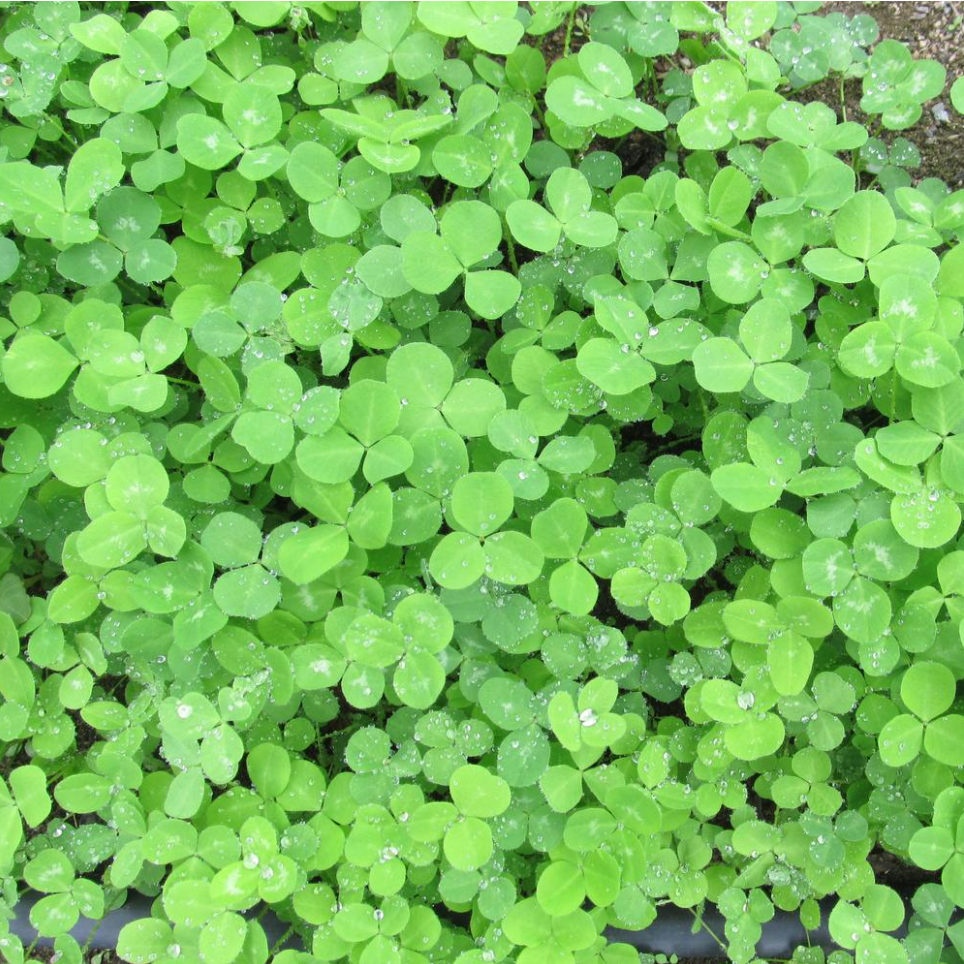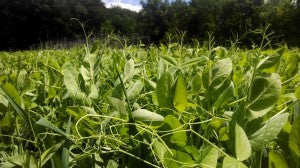
Spring Cover Crop Care
Cover crops aren't just for the end of the growing season! Sowing cover crops in spring, summer, and fall is a healthy, cost-effective solution to maintaining strong and productive soils. In spring, cover crops are great for revitalizing winter-weary soils to prepare them for tender, late-spring or summer sowings and seedlings. As they often have a short window for growing (between the time when it's warm enough to grow and the time when food crops are planted), it's best to choose quick-growing crops. Some of our spring favorites are:
 Field Peas: Field peas have incredible nitrogen fixing qualities, plus they winter kill, making them a great beginner's cover crop. Peas can be sown any time, but perform best when sown in spring or late summer. Broadcast and rake in, or sow in close rows. If sown at the proper time, a thick stand of peas will suppress weeds as well. Peas winter-kill at temperatures under 20 degrees. In the spring, after a fall crop, incorporate the plant matter well, or use as mulch by transplanting through the debris. Sow in early spring ahead of fall greens, or in late summer after early crops come out.
Field Peas: Field peas have incredible nitrogen fixing qualities, plus they winter kill, making them a great beginner's cover crop. Peas can be sown any time, but perform best when sown in spring or late summer. Broadcast and rake in, or sow in close rows. If sown at the proper time, a thick stand of peas will suppress weeds as well. Peas winter-kill at temperatures under 20 degrees. In the spring, after a fall crop, incorporate the plant matter well, or use as mulch by transplanting through the debris. Sow in early spring ahead of fall greens, or in late summer after early crops come out.
Late spring/summer:
Buckwheat: Buckwheat's greatest quality is its ability to out-compete weeds. This quick-growing tender annual also builds organic matter. For a fall crop, sow in late August/early September. Just make sure your crop does not set seed, as buckwheat can be weedy if allowed to self sow. As long as no seeds form, simply let the buckwheat winter kill, and incorporate in the spring if necessary. Several successions of buckwheat can be grown during the season. For a summer cover crop, mow or cultivate at flowering to kill the plants. Buckwheat flowers attract many beneficial pollinators in the summer as well, and can be used in pasture and field mixes.
For (or from) fall, sprung up in spring:
Some cover crops won't be killed off by winter frosts. These perennials require special attention once they start growing anew the following spring...
Medium Red Clover: can fix up to 100 pounds of nitrogen per acre! It's dense, matted foliage and thick roots are very effective at building organic matter too. Clover also draw nutrients that are below most root lines and draw them up closer to the surface, making them accessible to vegetable crops that follow. Red clover is a perennial, and will not winter kill. Sow in spring, summer or fall, and mow to prevent seed set. In the following spring, after the first season, mow and incorporate well by hand or with mechanical cultivate. Also makes a great pasture crop.






